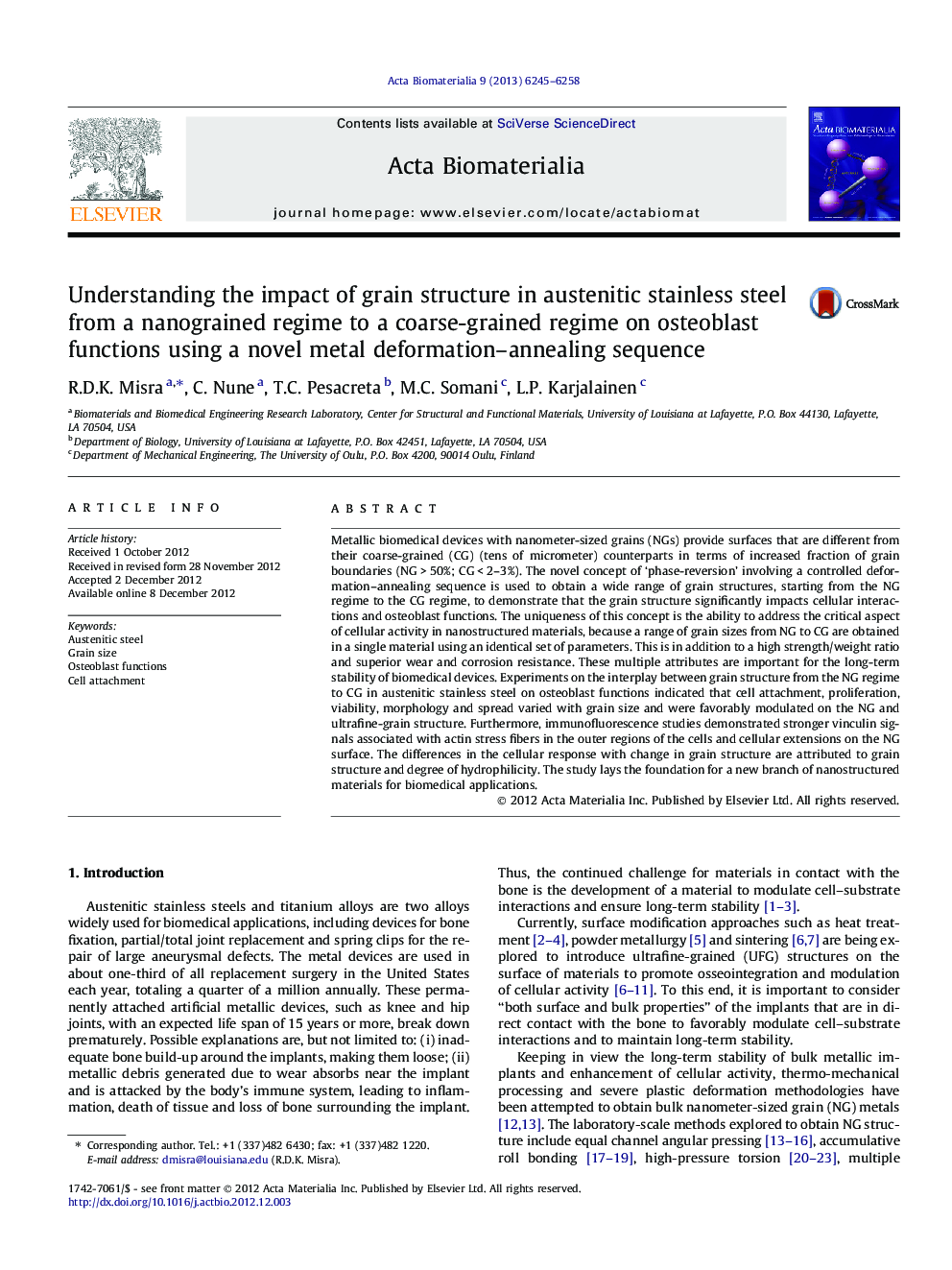| کد مقاله | کد نشریه | سال انتشار | مقاله انگلیسی | نسخه تمام متن |
|---|---|---|---|---|
| 10159881 | 59 | 2013 | 14 صفحه PDF | دانلود رایگان |
عنوان انگلیسی مقاله ISI
Understanding the impact of grain structure in austenitic stainless steel from a nanograined regime to a coarse-grained regime on osteoblast functions using a novel metal deformation-annealing sequence
ترجمه فارسی عنوان
درک تاثیر ساختار دانه در فولاد ضد زنگ آستنیتی از یک رژیم نانوذرات به یک رژیم درشت دانه بر عملکرد تومورهای استئوآبلاست با استفاده از یک رشته فلز تغییر شکل-خنثی
دانلود مقاله + سفارش ترجمه
دانلود مقاله ISI انگلیسی
رایگان برای ایرانیان
کلمات کلیدی
فولاد آستنیتی، اندازه دانه، تومورهای استئوبلاست دلبستگی سلولی،
موضوعات مرتبط
مهندسی و علوم پایه
مهندسی شیمی
بیو مهندسی (مهندسی زیستی)
چکیده انگلیسی
Metallic biomedical devices with nanometer-sized grains (NGs) provide surfaces that are different from their coarse-grained (CG) (tens of micrometer) counterparts in terms of increased fraction of grain boundaries (NGÂ >Â 50%; CGÂ <Â 2-3%). The novel concept of 'phase-reversion' involving a controlled deformation-annealing sequence is used to obtain a wide range of grain structures, starting from the NG regime to the CG regime, to demonstrate that the grain structure significantly impacts cellular interactions and osteoblast functions. The uniqueness of this concept is the ability to address the critical aspect of cellular activity in nanostructured materials, because a range of grain sizes from NG to CG are obtained in a single material using an identical set of parameters. This is in addition to a high strength/weight ratio and superior wear and corrosion resistance. These multiple attributes are important for the long-term stability of biomedical devices. Experiments on the interplay between grain structure from the NG regime to CG in austenitic stainless steel on osteoblast functions indicated that cell attachment, proliferation, viability, morphology and spread varied with grain size and were favorably modulated on the NG and ultrafine-grain structure. Furthermore, immunofluorescence studies demonstrated stronger vinculin signals associated with actin stress fibers in the outer regions of the cells and cellular extensions on the NG surface. The differences in the cellular response with change in grain structure are attributed to grain structure and degree of hydrophilicity. The study lays the foundation for a new branch of nanostructured materials for biomedical applications.
ناشر
Database: Elsevier - ScienceDirect (ساینس دایرکت)
Journal: Acta Biomaterialia - Volume 9, Issue 4, April 2013, Pages 6245-6258
Journal: Acta Biomaterialia - Volume 9, Issue 4, April 2013, Pages 6245-6258
نویسندگان
R.D.K. Misra, C. Nune, T.C. Pesacreta, M.C. Somani, L.P. Karjalainen,
